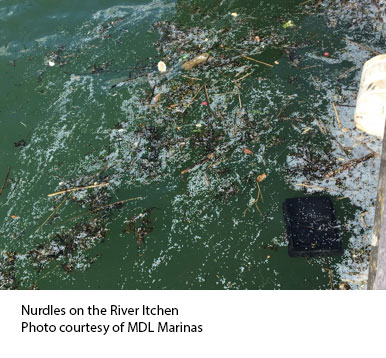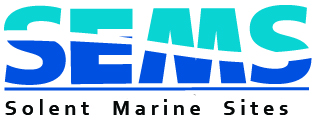Littering
 There is growing concern about the growth of both plastics and microplastics in the marine environment and their potential physical and ecotoxic effects. Research has shown that Marine Protected Areas have just as much of a litter problem as non designated sites. There is limited information on what impacts litter has on designated sites, a report commissioned by Defra looks at: Assessing Current Evidence of Potential Impacts of Plastic on Marine Protected Species & Habitats in England & Wales.
There is growing concern about the growth of both plastics and microplastics in the marine environment and their potential physical and ecotoxic effects. Research has shown that Marine Protected Areas have just as much of a litter problem as non designated sites. There is limited information on what impacts litter has on designated sites, a report commissioned by Defra looks at: Assessing Current Evidence of Potential Impacts of Plastic on Marine Protected Species & Habitats in England & Wales.
A broad range of marine organisms (from plankton to whales) has been shown to become entangled in, or ingest, plastics. Physical encounters through entanglement and entrapment by marine debris (nets, ropes and crab pots; to car air filters and polythene bags) have been widely reported for marine mammals. There is also clear evidence that critical life processes, including metabolism, growth, reproduction and behaviour (and mortality) are affected by ingestion of plastic across marine species (source: Marine Plastic Pollution - Defra Evidence Review).
Marine litter is any manufactured or processed solid material from anthropogenic activities that are discarded, disposed of or abandoned once entering the marine and coastal environment including: plastics, metals, timber, rope, fishing gear etc. and their degraded components, e.g. microplastic particles. Ecological effects can be physical (smothering), biological (ingestion, including uptake of microplastics; entangling; physical damage; accumulation of chemicals) and/or chemical (leaching, contamination). It can also be a possible vector for the transfer of alien species.
The Marine Conservation Society's annual Beach Clean Campaign records the amount and types of litter found on UK beaches. Data shows that the majority of items are hard to source, but that public littering is second and fishing third; plastic and polystyrene items being the most commonly found items. A study by the Marine Conservation Society (MCS), the University of Exeter and Natural England found “no difference” in the amount of this anthropogenic litter present inside and outside MPAs.
Responsibility for managing litter is primarily a District Council duty except where the land is owned by another public authority or privately.
Microplastics
Microplastics are small plastic particles in the environment that are generally between 1 and 5 mm (0.039 and 0.197 in) although some are invisible to the human eye. Microplastics are mainly composed of six polymers: polyethylene, polypropylene and expanded polystyrene, which are more likely to float, and polyvinyl chloride, nylons and polyethylene terephthalate (PET), which are more likely to sink. Microplastic sources include industrial products such as paints, abrasive cleaning agents and tyres, and personal care products such as toothpaste and skin cleaners, as well as fragmentation of larger plastics dumped into the oceans.
After entering the ocean, microplastics can be distributed globally with especially high concentrations in ocean gyres, but also close to population centres and shipping routes. Microplastics have been found on beaches, in surface waters, seabed sediments and in a wide variety of marine life. Plastics tend to absorb and concentrate contaminants from surrounding seawater and can also contain a high proportion of additive chemicals incorporated during manufacture. The UK government has banned the sale and manufacture of microbeads in cosmetic products.The Great Nurdle Hunt has lots of information and resources on nurdle pollution.
The Environment Agency have produced a report on Plastics Challenges for the Water Environment, 2021
Old Boat Disposal
Wrecked and abandoned vessels are an issue across the UK, where, for a variety of reasons, they are no longer used by their owners, instead becoming dilapidated, sometimes taking on water and silt, breaking apart and partially or completely sinking, often posing a navigational hazard to water users as well as being large scale litter. In late 2021, the Port of Southampton’s Harbour Master’s team began a substantial programme to clear wrecks across their jurisdiction, prioritising those with the highest navigational risk. This has involved clearing wrecks from Calshot and Southampton Water as well as this large cluster by Northam Bridge, one of the main thoroughfares into and out of the city. Disposal is a complex process for wreck removal, owners need to be traced, 28 days’ notice served and a full risk assessment carried out for each vessel. There is then the physical process of securing each vessel, checking for contaminates and other hazards on board, and then lifting out, breaking down and disposing of the vessels safely. ABP mer produced a report for Milford Haven on the disposal of derelict vessels that gives a good overview of the issues.
Defra comissioned a report on End of Life Recreational Vessels and Marine Litter that was published in 2024 and South Hams District Council have produced a Report on the pilot project for the disassembly, recycling and upcycling end of life vessels.
The Natural Environment Group produced a short paper that looks at who has responsibility for disposing of abandoned GRP boats.
Wildlife Aware Beach Cleans
To help people learn about the impact on wildlife when they’re clearing litter from the beach, Bird Aware Solent joined forces with the Final Straw Foundation, the Marine Conservation Society and the 2 Minute Foundation to create some helpful guides. Litter-picking events are becoming more popular with local people and these guides help to minimise disturbance to wildlife.
Beauty of the Beach
Southern Water and the Environment Agency joined forces to establish a 'Beauty of the Beach' campaign. This seeks to educate the public about the work being doing to keep our beaches and clean and how they can contribute. They also have an 'unflushables campaign' that provides information on how to prevent sewer blockages from wet wipes and other items.
Seabins
A Seabin is a “trash skimmer” designed to be installed in the water of Marinas, Yacht Clubs, Ports and any water body with a calm environment and suitable services available. The unit acts as a floating garbage bin skimming the surface of the water by pumping water into the device. It can intercept: floating debris, macro and micro plastics and even micro fibres with an additional filter. It is also able to clean the water from contaminated organic material (leaves, seaweed, etc). It can easily be equipped with oil absorbent pads able to absorb petroleum-based surface oils and detergents.
Resources
- Assessing Current Evidence of Potential Impacts of Plastic on Marine Protected Species & Habitats in England & Wales, Defra, 2020.
- Solent Plastics Pollution hub
- A simple guide to how plastics affect the ocean
- Best practice for Seabin Operators
- Clean Solent Shores and Seas litter page
- Anthropogenic litter in English MPAs
- Future of the Sea: Plastic Pollution
- Assessment of progress towards the achievement of Good Environmental Status for litter
- Assessing the impact of exposure to microplastics in fish, 2015
- Student Paper on Microplastics in the Solent, Megan Tomlinson, 2016
- Microplastics in the Solent estuarine complex, UK: An initial assessment
- Microplastic surveying at West Wittering
- Youtube video on microplastics and ecotoxicity


